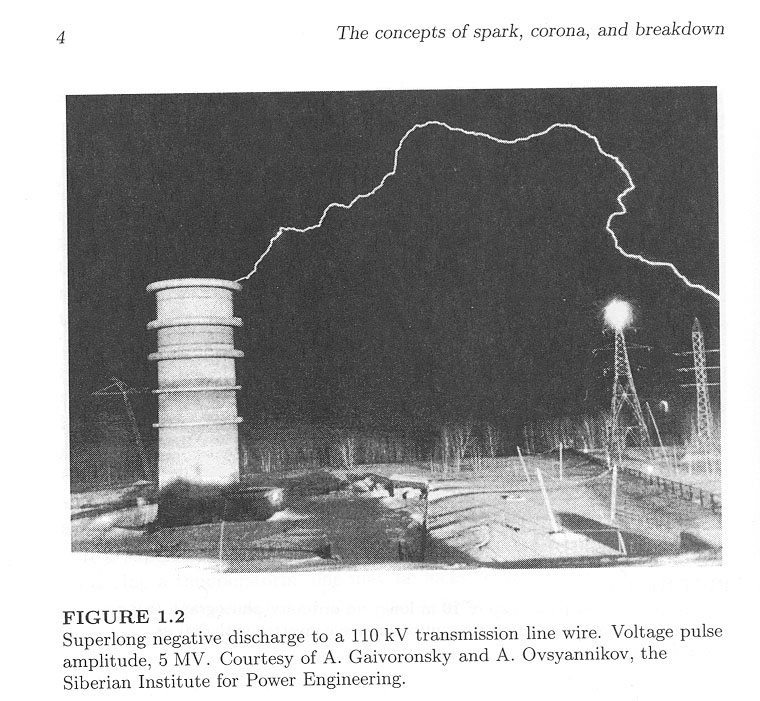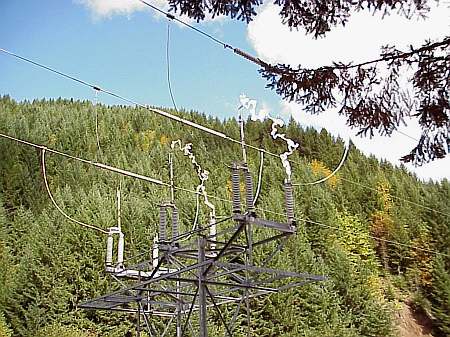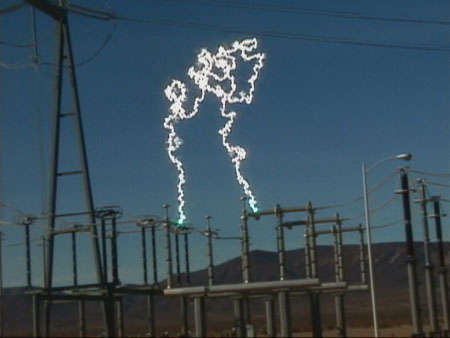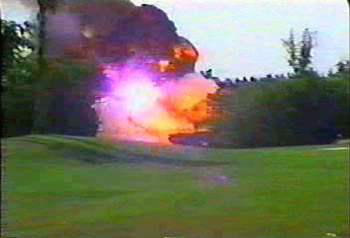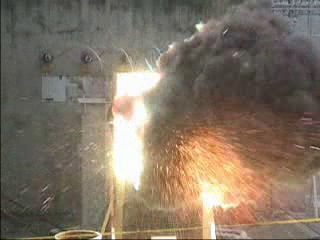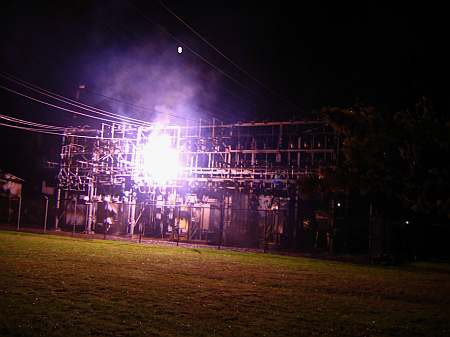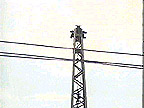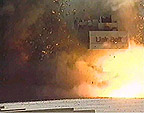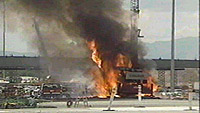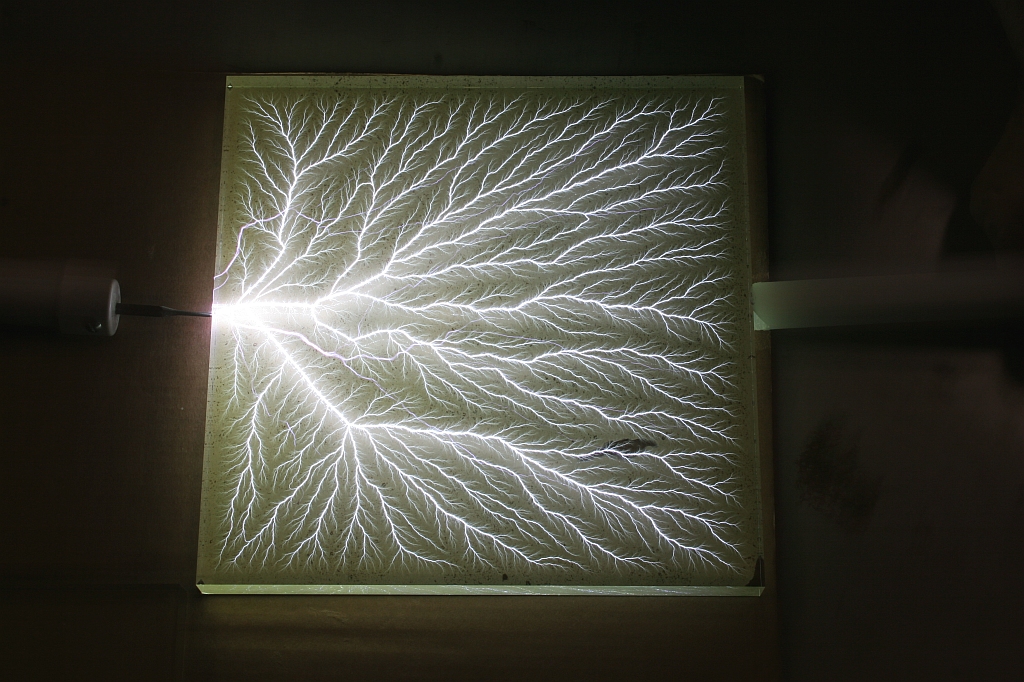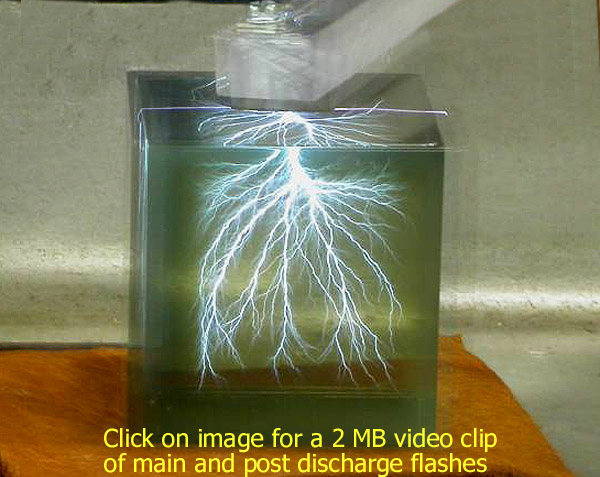The
above photo is courtesy of Kane Quinnell from Australia. It was almost his last.
The above lightning stroke was almost certainly a "bolt from the blue"
- a relatively rare positive lightning bolt that originates from the top region of a storm cloud
rather than from the negatively charged cloud base. These massive discharges
can travel horizontally, often in the clear air away from the storm,
for up to 35 miles from the top of the main
storm. Positive lightning bolts can pack peak currents of up to 340,000
amperes, and they usually have a long lasting "tail" of current that
persists for hundreds of milliseconds. This is about ten times more current
and ten times longer than regular (negative) lightning. As a result, positive
lightning is extremely hot, and it does considerable damage to whatever it hits. If you happen to be
unlucky enough to be the target of one of these monster bolts, you DO
NOT survive. If you look at the above image very carefully, you can see a
small leader coming up from the top of the shed, just to the right of
the main stroke. Here's some additional information about "Bolts from the Blue", and following is Kane's description of what happened in his own words:
"I happened to be out in the back yard, watching a storm on Friday
night (14/01/05) that appeared to be a few km away, (I live in Old
Toongabbie, and the storm appeared to be in Pendle Hill, or Greystanes,
Australia). I set the camera's settings so that the shutter remained
open for four seconds, placed it on the back bumper of my car, hoping
to get a few shots of lightning in the clouds a few kilometers away. There
was no rain at all, and stars could be seen over the north 1/3 of the
sky, so I did not feel in danger in any way. Boy was I mistaken...
DO NOT UNDERESTIMATE ELECTRICAL STORMS - YOU COULD GET YOURSELF
KILLED!"
"I clicked away a few times, and got nothing, and then clicked the
button again, and within 0.5 seconds of me pressing the button, I had
jumped at least 2 metres in the air, as I heard a tremendously loud
crack of thunder, and see this amazingly bright beam of electricity
right in front of me. I had then landed, grabbed the camera, and was
inside the house within 2 seconds."
"I did not realize just how lucky I was until I uploaded the picture to my
computer, and saw a leader stroke that must have originated no more
than 2 metres from where I was standing next to my car, under my
carport. Had the main charge taken the leader near me, rather than the
one it did, I would be dead."
"When lightning strikes, it actually comes up from the ground first
(called a leader stroke), this stroke makes the air within it
conductive, and once it reaches the cloud, you have a complete circuit,
and the bolt of lightning comes down from the cloud along the leader
stroke. First leader to the cloud wins, luckily mine did not."
"I estimate that the main bolt was approximately 1.5- 2 metres in diameter, and
struck something in the yard behind the shed that is located at the
back of the yard. That would have had an extremely large charge, and
would have been extremely hot, hotter than the surface of the sun, at
5,500 degrees Celsius, it could have been around 30,000 degrees
Celsius. Needless to say, I was buzzing for the rest of Friday night,
due to the amount of adrenaline going through me 'cause of how close it had come."
Kane Quinnell was one very lucky bloke!
|

